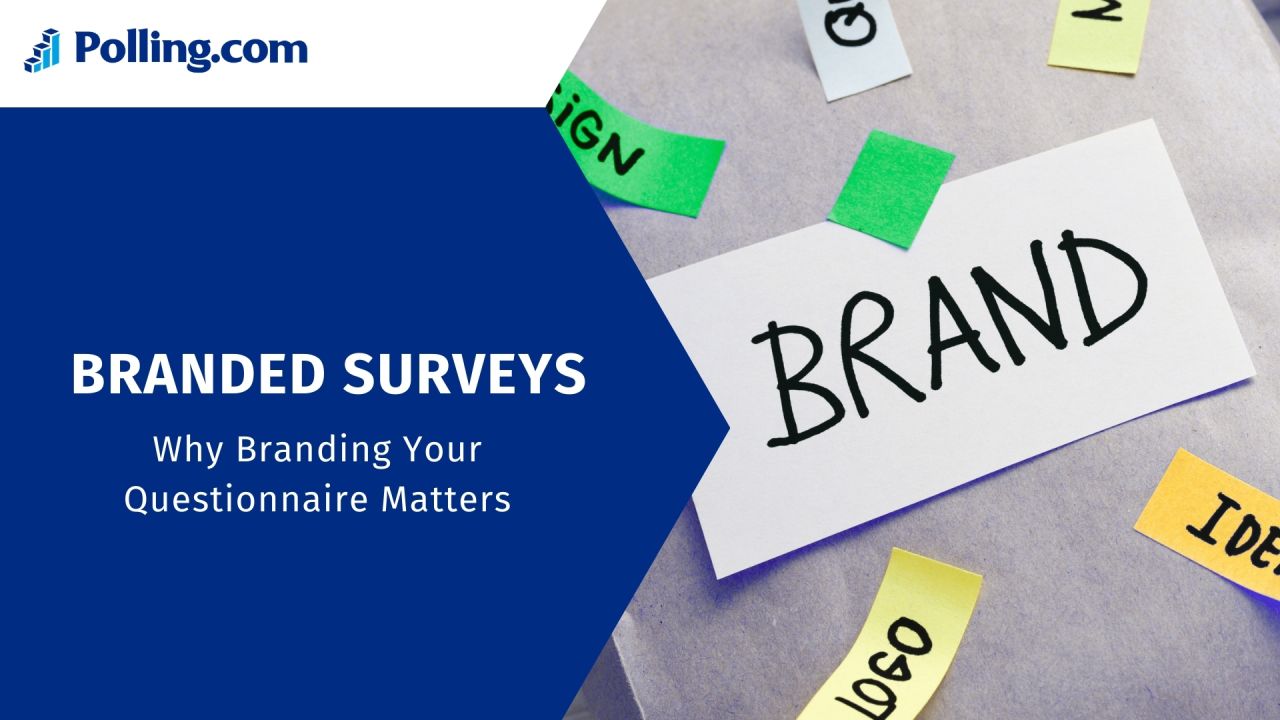
Branded Surveys: Why Branding Your Questionnaire Matters
In today’s competitive landscape, every customer interaction is a chance to strengthen your brand. Surveys are no exception.
While many businesses rely on plain, generic questionnaires, branded surveys take feedback collection a step further, turning it into an opportunity to build trust, reinforce recognition, and create a consistent brand experience.
In this article, we’ll explore what branded surveys are, why they matter, and how you can use them to collect feedback while strengthening your brand identity.
What Is a Branded Survey?
A branded survey is a questionnaire designed to reflect your company’s identity.
From the visual elements like logos, fonts, and color schemes, to the tone of voice used in the questions, every detail aligns with your brand.
Branding matters in feedback collection because it signals professionalism and authenticity.
When respondents recognize your brand’s look and feel, they’re more likely to trust the survey and engage honestly.
Unlike generic or unbranded surveys, which can feel impersonal, branded surveys reinforce who you are and why the feedback matters.
Key Elements of a Branded Survey
To create a truly branded survey, consider incorporating:
- Logos, color palettes, and fonts: Keep visuals consistent with your website and marketing materials.
- Custom URLs: Use branded links to strengthen trust and avoid spammy appearances.
- Branded language and tone: Ensure your survey questions sound like they’re written in your company’s voice.
- Branded thank-you pages and CTAs: Extend the experience after submission, guiding respondents toward your blog, services, or next steps.
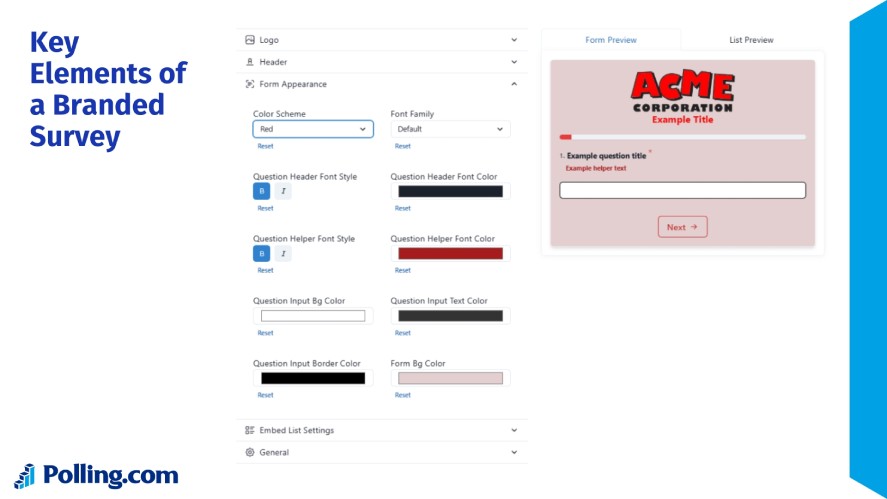
For example, branded post-survey pages on blogs can highlight related content, promote new offers, or simply thank users with a message that feels personalized.
The Strategic Benefits of Using a Branded Survey
Branded surveys go beyond gathering survey data; they build trust, strengthen recognition, and improve the overall quality of survey responses.
When your survey feels like a natural extension of your brand, respondents are more willing to engage thoughtfully.
1. Boosts Response Rates and Engagement
When people recognize your logo, color scheme, or tone of voice, they feel more comfortable participating.
Familiarity reduces hesitation and increases survey response rates.
In fact, branded emails and surveys often see 20–30% higher click-through and response rates, making them a powerful way to collect reliable feedback.
2. Enhances Credibility and Reduces Survey Fatigue
A generic-looking survey can easily be mistaken for spam or a phishing attempt. Consistent branding signals legitimacy and reassures respondents that their data is safe.
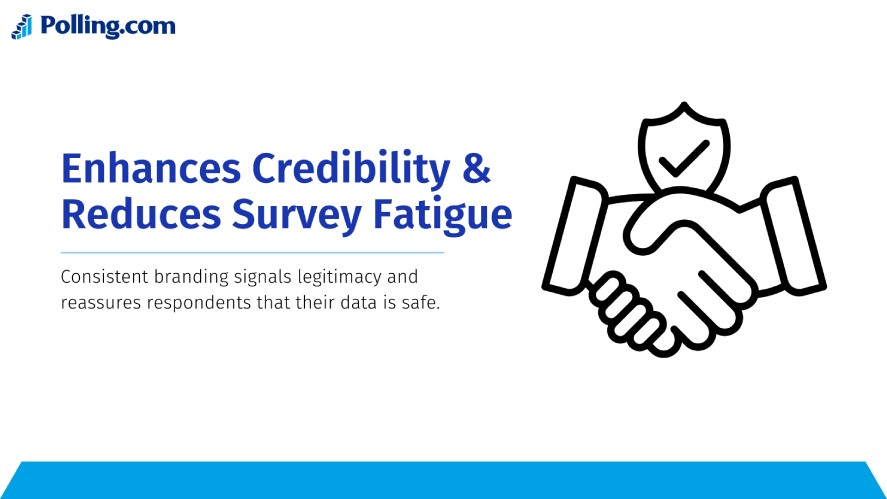
This credibility helps minimize survey fatigue since participants know they’re contributing to something genuine and worthwhile.
3. Reinforces Brand Identity Across Channels
Every survey is another chance to showcase your brand voice and visual identity.
Whether it’s sent by email, embedded on your site, or shared via social media, branded surveys align seamlessly with your omnichannel strategy.
They keep your brand top of mind even during feedback collection.
4. Encourages Better Quality Responses
Trust directly impacts the quality of feedback.
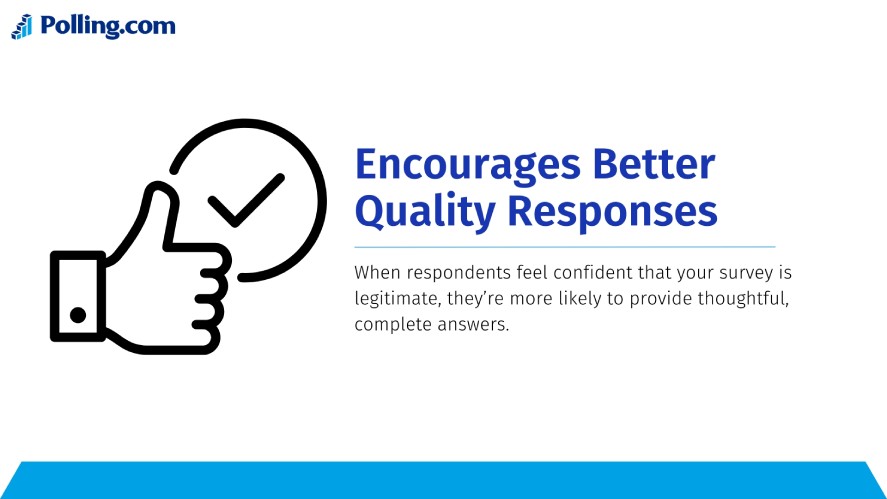
When respondents feel confident that your survey is legitimate, they’re more likely to provide thoughtful, complete answers instead of rushing through or skipping questions.
The result? Richer data that drives smarter decision-making.
5. Differentiates Your Business in a Crowded Market
Inboxes and feeds are overflowing with requests for attention. And a branded survey stands out immediately, signaling professionalism and value.
This differentiation provides a competitive edge in both B2B and B2C environments, where customer and stakeholder insights are key to staying ahead.
Common Use Cases for a Branded Survey
Branded surveys aren’t just about aesthetics; they serve real business purposes across customer, product, market, and employee insights.
Here are some of the most impactful branded surveys applications.
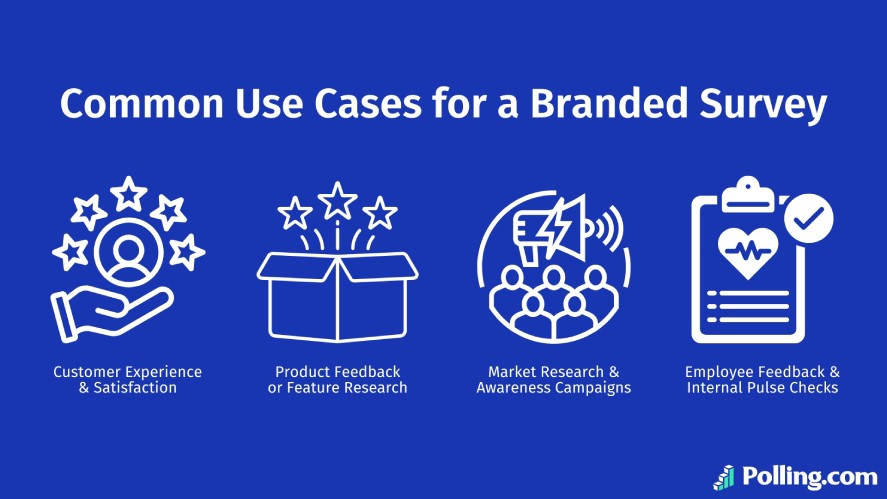
Customer Experience & Satisfaction (CSAT, NPS)
Surveys sent after a purchase or service interaction perform better when branded.
Customers are more likely to share honest feedback when they see the survey is an authentic part of your post-purchase journey.
Pre-built branded templates also streamline the survey process, reinforcing professionalism.
Product Feedback or Feature Research
During MVP or beta testing, a well company-branded questionnaire signals that your team takes feedback seriously.
Internal and external stakeholders view it as a professional step in the development cycle, increasing their willingness to share detailed insights on usability, features, and improvements.
Market Research and Brand Awareness Campaigns
Branded surveys help you gauge how your brand is perceived in the market.
Whether measuring awareness, testing campaigns, or validating positioning, a consistent look and feel ensures respondents connect the feedback directly to your business, not just a faceless questionnaire.
Employee Feedback and Internal Pulse Checks
Internally, branding signals care and culture.
A branded employee survey feels official and trustworthy, encouraging staff to provide candid feedback.
It reinforces that their voices are valued and that leadership is committed to transparency and continuous improvement.
The Pitfalls of Poorly Branded Surveys
Branded surveys can strengthen trust and engagement, but when done poorly, they can do more harm than good.
Below are the most common pitfalls to watch out for.
Overdesign That Hurts Usability
A survey should guide respondents smoothly from start to finish, but heavy-handed branding often does the opposite.
Overloading the design with banners, animations, or oversized logos can slow load times, distract from the questions, and make the survey feel like a marketing pitch rather than a neutral customer feedback platform.
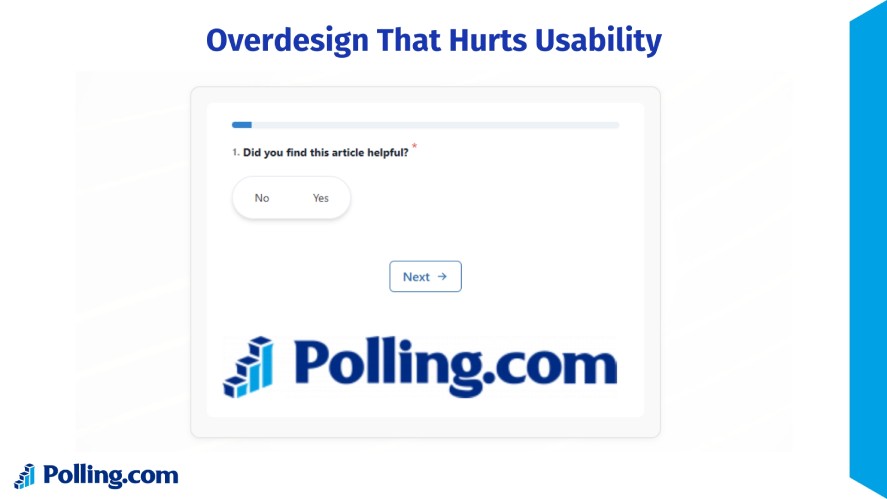
Usability research shows that cluttered interfaces increase drop-off rates because participants lose focus or patience.
The most effective surveys use branding with restraint, like subtle colors, clear fonts, and a layout that emphasizes the brand survey questions themselves.
Remember: the design should support the content, not compete with it.
Inconsistent Brand Voice
Branding isn’t just visual; it’s also about the language you use.
If your brand is known for being approachable and friendly, but your survey copy reads stiff and robotic, respondents may question whether the survey is authentic or even relevant to their experience.
This mismatch can create friction, reduce trust, and result in less thoughtful responses.
For example, a casual lifestyle brand asking feedback in formal “Dear Sir/Madam” language feels out of place.
Every touchpoint, including surveys, should reflect the same voice customers encounter on your website, emails, or in-store. Consistency builds familiarity, and familiarity builds trust.
Using Free Tools That Limit Branding Options
While free survey tools can be tempting, their limitations often undermine branding efforts.
Many restrict font choices, color palettes, or custom URLs, forcing you into generic templates that don’t align with your brand.
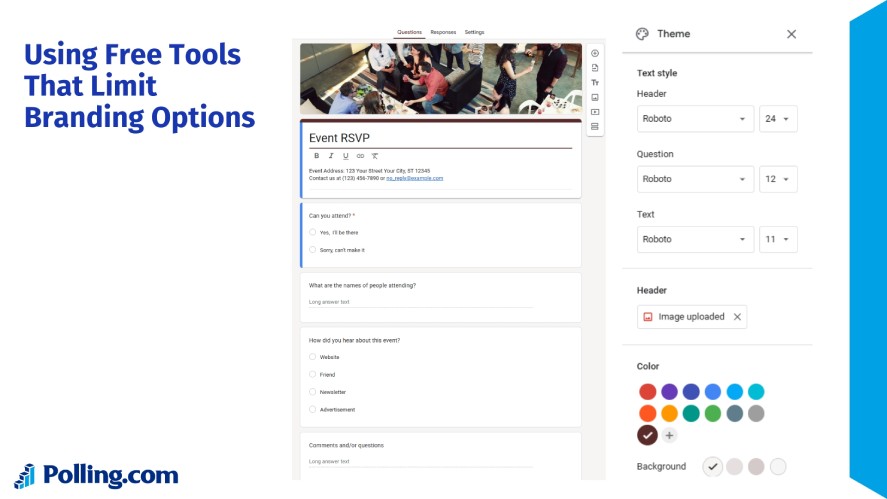
Even worse, these generic designs may cause confusion, and respondents might not recognize the survey as coming from your business and mistake it for spam or phishing.
A lack of branding control also weakens professionalism, especially in B2B contexts where every detail reflects your company’s survey credibility.
Investing in tools that allow for full customization ensures your survey looks authentic, aligns with your overall design system, and feels like a seamless extension of your brand.
How to Create a Branded Survey That Works
Here’s a step-by-step approach to building surveys that both reflect your brand and deliver actionable insights:
Step 1 – Define Your Survey’s Goal
Before jumping into design, be crystal clear on what you’re trying to achieve.
Are you measuring customer satisfaction, testing reactions to a new product, or gathering insights about brand perception?
A defined goal will shape everything from the question types for surveys to how you’ll analyze the survey and results.
Without it, you risk collecting data that looks impressive but doesn’t lead to actionable decisions.
Step 2 – Match Your Brand’s Visual Identity
Your survey should look like it came directly from your business, not a generic template.
Upload your logo, apply your official hex color codes, and stick with the fonts used across your website or marketing materials.
Consistency helps respondents immediately recognize the survey as legitimate and trustworthy.
Even small visual touches, like branded progress bars or button styles, can strengthen recall and keep your company top of mind while they answer.
Step 3 – Write in Your Brand’s Voice
Visuals catch the eye, but your wording seals the connection. Write questions and instructions in the same tone you use with customers elsewhere.
If your brand is playful, add light touches of humor. If you’re professional and formal, keep the phrasing polished and precise.
Respondents should feel like they’re still interacting with your brand, not a generic questionnaire written by someone else.
Consistency in voice makes the experience authentic and reinforces brand trust.
Step 4 – Optimize for UX and Mobile
A good-looking survey isn’t enough if it’s frustrating to complete. Most respondents will open surveys on their phones, so prioritize mobile responsiveness.
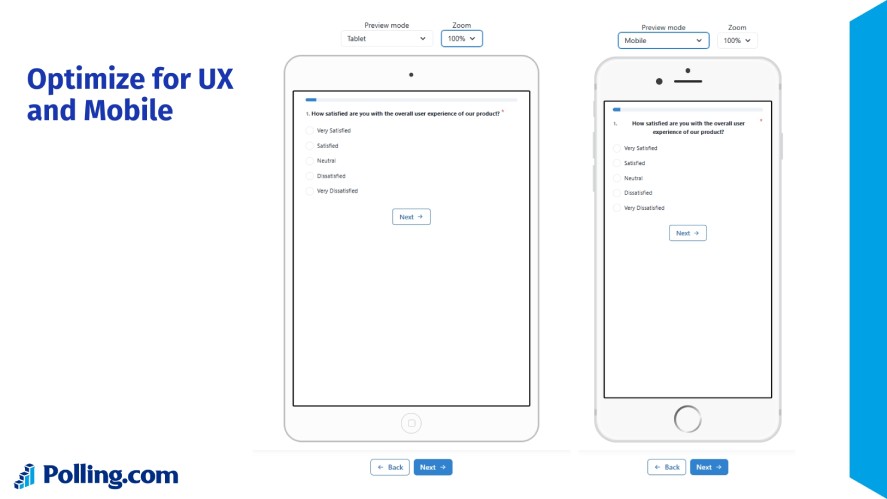
Use simple layouts, large tap-friendly buttons, and avoid long text blocks.
Keep surveys concise but meaningful. For example, five well-designed questions are better than 20 clunky ones.
Accessibility also matters: ensure proper color contrast, readable font sizes, and support for screen readers to make every participant feel included.
Step 5 – Use Branded Follow-Ups
The personalized survey experience doesn’t end with the final question. Reinforce your brand with a thoughtful follow-up message.
This could be a personalized thank-you note, a redirect to your website or social media, or even an exclusive discount code.
A branded follow-up closes the loop and turns a simple feedback request into a positive touchpoint that deepens the relationship with your audience.
Why Polling.com Is the Best Platform to Create a Branded Survey
When it comes to surveys, branding is more than just logos and colors; it’s about building trust, keeping consistency, and extracting better insights.
Polling.com was built with businesses in mind, giving you the tools to design professional, branded surveys that feel authentic and deliver actionable data.
Designed for Business Use
Polling.com isn’t a consumer toy; it’s built for professional teams who need reliability, scalability, and control.
Whether you’re a startup validating an MVP or an enterprise running quarterly NPS programs, the survey and polling software can handle large datasets, multiple users, and secure compliance.
Full Branding Customization
Go beyond a simple logo upload, Polling.com offers survey branding options, custom CSS, and multilingual support so your surveys truly reflect your brand identity.
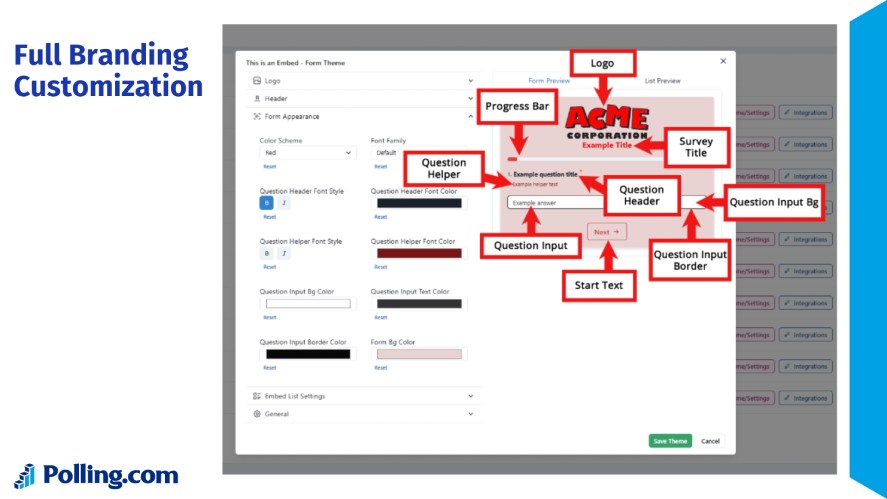
Every element, like fonts, layouts, button styles, even error messages, can be aligned with your company’s look and feel.
Powerful Targeting & Analytics
Collecting responses is only half the battle. With Polling.com, you can segment results by demographics, track NPS over time, and compare trends across multiple surveys.
The built-in analytics suite helps you dig into the “why” behind the numbers, not just the “what”.
Easy to Share Across Channels
Great surveys meet respondents where they are. Polling.com makes it simple to share your branded surveys through email, SMS, website embeds, or even QR codes.
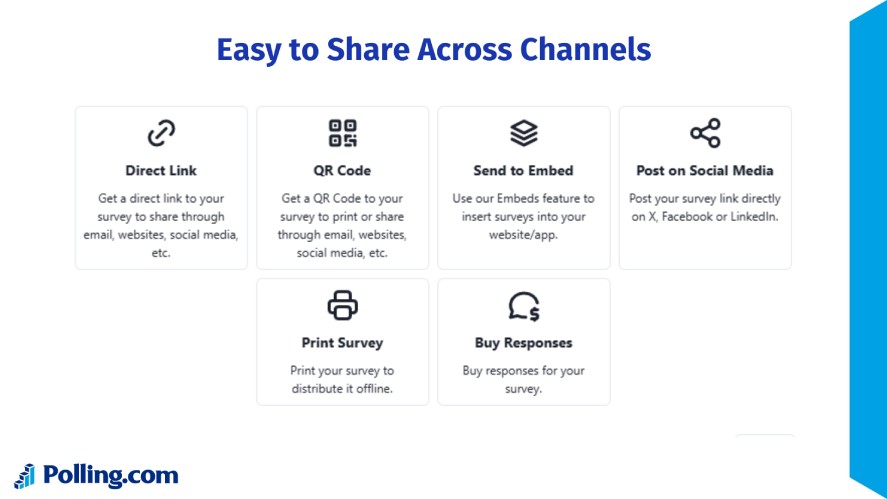
Every channel preserves your design and brand consistency, so the experience feels seamless for your audience.
Real-World Examples of a Branded Survey in Action
Branded surveys aren’t just theory; they have a measurable impact across industries.
From gaming communities to SaaS companies and eCommerce brands, organizations that invest in branded feedback tools see stronger participation and more actionable insights.
Case Study 1: Game Blogs Like Mr. Mine and Clicker Heroes
Gaming communities thrive on trust and familiarity. Popular blogs and fan sites often use branded surveys to engage their audiences.
For example, Mr. Mine integrated a Polling.com-powered survey directly into their blog guide, styled with the game’s logo and color palette.
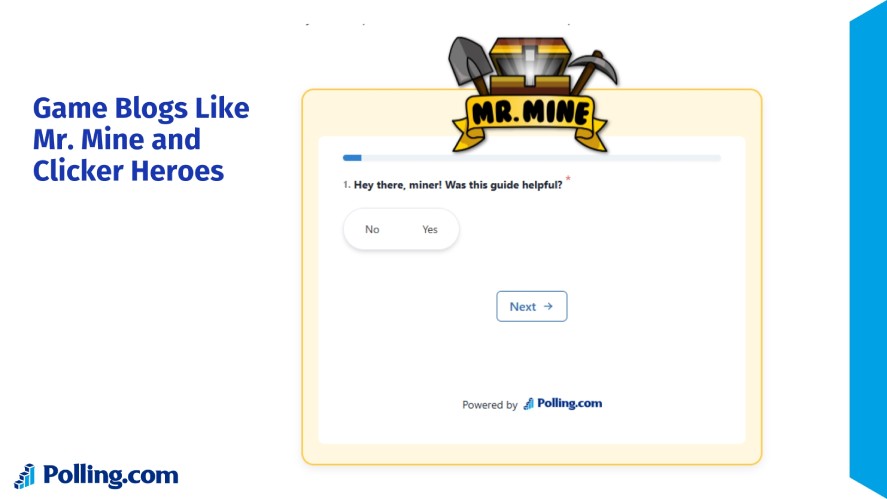
This small design choice reassured players the survey was authentic, not spam. As a result, players were more likely to respond, leading to:
- Higher survey participation rates
- More reliable feedback on guides and features
- Stronger sense of community connection
When surveys look and feel like part of the game world, they stop being a chore and start being part of the fun.
Case Study 2: SaaS Onboarding Survey
A SaaS provider wanted to measure first impressions right after onboarding.
They launched a branded NPS survey that matched their dashboard design with the same colors, fonts, and reassuring tone.
The impact was immediate:
- Customers trusted the survey as a legitimate part of the product experience
- Response rates jumped 35% compared to generic customer feedback tools
- Feedback revealed onboarding friction points the company quickly fixed
By aligning feedback collection with their brand identity, the company turned early customer input into a competitive advantage.
Case Study 3: eCommerce Post-Purchase Feedback
An online retailer sought more insight into post-purchase satisfaction. Instead of sending a bland third-party form, they embedded a branding questionnaire link in follow-up emails.
The design mirrored the online store’s look and feel with the same colors, typography, and brand tone.
The results spoke volumes:
- Customers recognized the survey as part of the shopping journey
- Feedback quality improved, with richer comments on product quality and shipping
- The company used these insights to fine-tune packaging and logistics
Branded surveys turned one-time buyers into repeat customers by reinforcing trust and consistency at every touchpoint.
Is a Branded Survey Worth It for You?
Branded surveys are more than a nice-to-have; they’re a direct driver of trust, engagement, and higher respondent rates.
The payoff is clearer insights, stronger relationships, and data you can actually act on.
Who benefits the most?
- eCommerce stores: Gain post-purchase insights, reduce cart abandonment, and refine product pages.
- SaaS companies: Collect onboarding and churn feedback while reinforcing your brand’s legitimacy.
- Agencies: Use branded client feedback surveys to show professionalism and strengthen long-term trust.
- HR teams: Send internal engagement surveys that feel official, confidential, and tied to company culture.
When to Use Branded Surveys Vs. Generic Tools
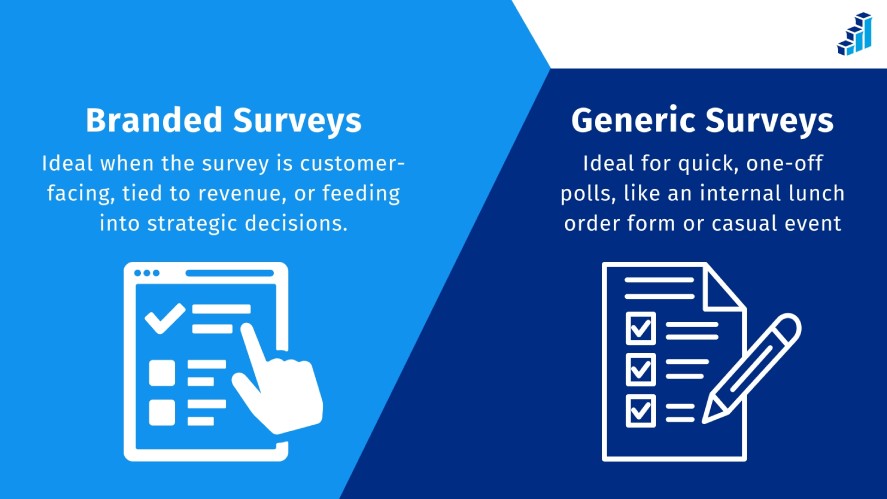
Use branded surveys if you care about trust, professional appearance, and high-quality feedback.
They’re ideal when the survey is customer-facing, tied to revenue, or feeding into strategic decisions.
Use generic free tools for quick, one-off polls where branding doesn’t matter, like an internal lunch order form or casual event RSVP.
In short: if your survey has the potential to influence business outcomes or customer relationships, branding is worth the investment.
Final Thoughts: Make Every Survey a Brand Experience
A survey isn’t just about collecting answers; it’s part of your brand experience. Sending out a plain, off-brand form can feel disjointed and even damage trust.
On the other hand, a branded survey reassures your audience that their feedback matters and is being collected by you, not some faceless third party.
The result? More responses, better insights, and stronger connections.
With platforms like Polling.com, you don’t need a design team or coding expertise.
In just a few clicks, you can create surveys that look and feel like your business, share them across any channel, and track responses in real time.
